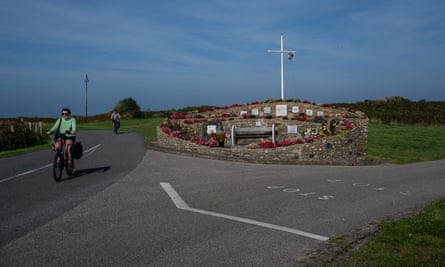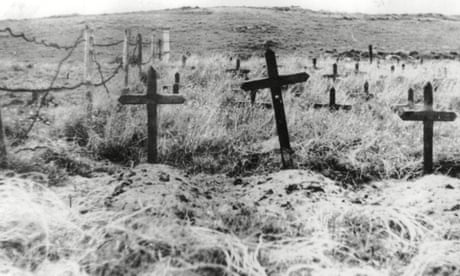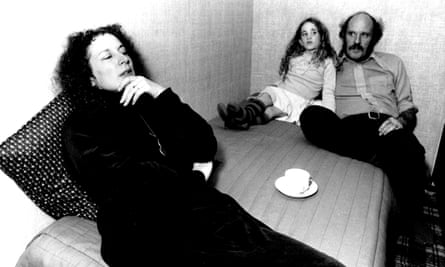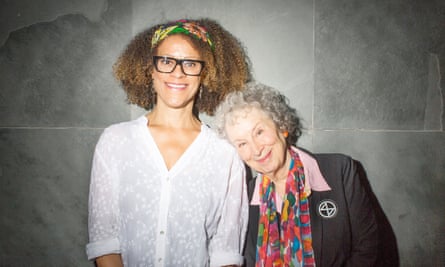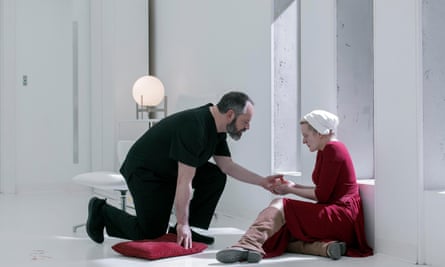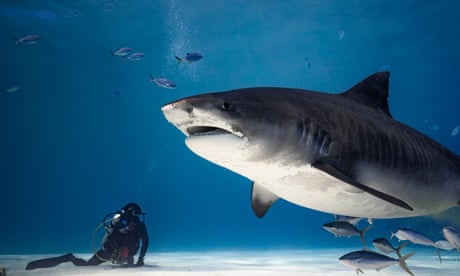Analysis
Sadiq Khan’s win heralds even bigger Labour victory at general election
‘Chipper’ Conservatives crumple in face of incumbent mayor’s broad appeal to London voters
Aletha Adu
Sat 4 May 2024
THE GUARDIAN
Before the counting had even started, senior Tory sources were briefing that their candidate for London mayor, Susan Hall, had pulled off a spectacular, and unlikely, victory.
Despite the Labour incumbent, Sadiq Khan, having a consistent polling lead throughout the contest, Tory insiders briefed journalists that the mood was “chipper” at the Conservative headquarters on Friday night after polls closed, and that they were “utterly convinced” Hall had won.
Such was their conviction that even some London Labour figures, who probably should have known better given no votes had yet been counted, began privately questioning whether the result could be tighter than they had expected.

Sadiq Khan elected London mayor for third term in further boost for Labour
Khan himself had expressed concerns earlier in the week about the assumptions being made about a Labour victory, wary of complacency dampening his vote.
“People said Scotland was a Labour country, we’ve all seen how that ended,” the nervous London mayor told the Guardian on Tuesday. “I remember being told by Ken Livingstone’s team in 2008 that there wasn’t a cat in hell’s chance of Boris Johnson winning. We know how that movie ended.”
But as the votes mounted up for Khan, and it became apparent to even the more creative elements of the London Tory party that turn-out did not automatically translate into more votes for Hall, party insiders had to admit they had been wrong.
While senior party figures pointed the finger of blame at “overexcited” activists, despite the rumours appearing to originate from CCHQ, Labour sources noted the 24 hours between votes being cast and counted had left a “moral vacuum” to suck in social media speculation.
Khan’s allies were reassured after hearing voter turnout was 40.5%, only down 1.5% from 2021 despite the introduction of voter ID. It had been one electoral change that Khan had feared could greatly hamper his vote at this election.
The results when they came spoke for themselves, with Khan piling up votes right across the capital, including in “super constituencies” in the west and south-west of the capital that had previously been held by the Tories. At about 2pm, Labour called victory.
And contrary to suggestions his vote would suffer as a result of extending the Ulez road user scheme, it appears to have done him some favours. He took some of the Green party’s vote share in Merton and Lewisham, after weeks spent arguing that the London mayoralty was a two-horse race.
“It’s clear green voters heeded Sadiq Khan’s message that if they didn’t vote for him, in this first past the post voting system there’s a risk they’d end up with a Conservative mayor, Susan Hall, who was less enthusiastic about green policies,” said Prof Tony Travers of the London School of Economics, while noting the Liberal Democrats did much less tactical voting.

Local elections 2024: full mayoral and council results for England
The mayor’s allies will also have taken some comfort from the fact he seems to have retained Muslim voters and also, despite his stance on the Israel-Hamas conflict going further than the national Labour party, managed to keep the support of many Jewish voters in Barnet and Camden.
One Labour loyalist likened Khan to being the “sweetener for a Labour government”, noting his policies were able to attract leftwingers crying out for radical change, while also impressing those closer to the centre.
Yet his victory, while his biggest yet over the Tories in London, was still substantially below Labour’s national polling lead. The last-minute speculation over the result may have given some Tories a temporary reprieve, but their defeat in London simply foreshadows an even bigger one at the general election.
London mayor Khan wins record third term as Tories trounced in local polls
Issued on: 05/05/2024 -

Issued on: 05/05/2024 -

01:34 Video by: FRANCE 24
London's Labour mayor Sadiq Khan on Saturday secured a record third term, as the party swept a host of mayoral races and local elections to trounce the ruling Conservatives just months before an expected general election. Khan, 53, beat Tory challenger Susan Hall by 11 points to scupper largely forlorn Tory hopes that they could prise the UK capital away from Labour for the first time since 2016.
London's Labour mayor Sadiq Khan on Saturday secured a record third term, as the party swept a host of mayoral races and local elections to trounce the ruling Conservatives just months before an expected general election. Khan, 53, beat Tory challenger Susan Hall by 11 points to scupper largely forlorn Tory hopes that they could prise the UK capital away from Labour for the first time since 2016.
All the metro mayor election results
The Tories won just one of the metro mayor elections across the country.

Gabrielle Pickard-Whitehead
The Tories’ Bank Holiday blues have gone from bad to worse, having managed to win just one of the metro mayor elections across the country. A shock defeat in the West Midlands’ contest delivered another blow to Rishi Sunak and capped a dire few days of results for the Conservatives.
Here are all the metro mayor results.
Ben Houchen maintains Tees Valley
In what could be something of a political lifeline for Rishi Sunak, Conservative mayor Ben Houchen clung on to his post in Tees Valley, bucking the prevailing anti-Tory story of the local elections. Despite a 16.5 percentage swing point to Labour, Houchen won 81,930 votes against 63,141 for Labour, and 7,679 for the Liberal Democrats. Suggestions had been made that Houchen won the mayoral race partly because he distanced himself from the Tories, a claim which Conservative MP Andrea Leadsom described as “absolutely pathetic.”
Labour’s David Skaith elected first mayor for York and North Yorkshire
With North Yorkshire having been considered by many as a Conservative stronghold, Labour’s David Skaith victory in the York and North Yorkshire regions, represents a new blow to the Prime Minister, who is MP for the North Yorkshire constituency of Richmond.
Skaith won 66,761 votes. Conservative candidate Keane Duncan came in second place with 51,967 votes, with Lib Dem candidate Felicity Cunliffe-Lister in third on 30,867.
Labour’s Kim McGuinness elected as first North East mayor
Kim McGuinness has become the first-ever North East mayor, winning 185,051 votes, followed by independent candidate Jamie Driscoll with 126,652 votes. While campaigning for the role, the Labour mayor said her priorities would be “opportunity for everyone.” Following the declaration, she said: “Today is a really big moment for the North East as we take our first step towards taking control of our own future.”
Labour’s Claire Ward elected first mayor of East Midlands
Claire Ward, a former Labour MP for Watford, was elected the first mayor of the East Midlands, beating the Conservative candidate Ben Bradley by more than 50,000 votes. The Green party came third with 50,666 votes, just ahead of Reform UK. Ward said was “humbled” to have been elected to the role, and that voters had not only endorsed her but also a “changed Labour party that can now confidently and with conviction say we are ready to lead.”
Labour’s Steve Rotheram wins third term as mayor of Liverpool City Region
Steve Rotheram won his third successive term as mayor of Livery City Region. Rotheram beat his nearest rival, Conservative Jade Marsden, by more than 156,000 votes, increasing his vote share by 9.7 points. Marsden received 27,708 votes, narrowly beating the Green Party’s Tom Crane, who got 26,417 votes. Steve Rotheram was first elected as mayor in 2017. In his victory speech he said the people of Liverpool City Region had “just spoken, they have hollered loud and clear.”
“They have two messages – to the government, ‘enough is enough’, and locally, Labour is delivering.
“The road to Downing Street runs through transformative Labour administrations in local and regional government,” he added.
Oliver Coppard re-elected as South Yorkshire mayor
Labour’s Oliver Coppard has been re-elected as South Yorkshire mayor, having won 138,611 votes, equating to around 51 percent of all votes cast. Coppard was first elected mayor in 2022. Following his re-election, the South Yorkshire mayor said that people had the chance to “join with people from across the North to call out this government for their failure to level-up our country, to do what is right for the whole of our country.”
Andy Burnham re-elected as Greater Manchester mayor
Andy Burnham has won his third successive term as mayor of Greater Manchester. Burnham’s overwhelming win saw him receive 420,749 votes, more than 350,000 more votes than the Conservatives’ Laura Evans, who came second with 68,946.
The Labour mayor described the win as an “emphatic endorsement” of his policies.
Accepting his victory, he said he “ready to fight harder than I have ever fought for anything before, for a Greater Manchester where people can live free from the fear of debt, hunger and eviction, and where everyone is set up to benefit from the growing success of our city region today.”
Tracey Brabin re-elected as Labour mayor in West Yorkshire
Tracy Brabin has been re-elected as Mayor of West Yorkshire in what was thecounty’s second mayoral election. Under the first-past-the-post system, Brabin secured victory over second-placed Conservative candidate Arnold Craven by 275,430 votes to 82,757.
The mayoral position was created following a devolution deal between West Yorkshire’s five local authorities and the government. The re-elected Labour mayor pledged her new term in office would be about “delivery, delivery, delivery,” and said her focus would be on issues such as “franchising buses, mass transit and investing in our communities.”
Sadiq Khan re-elected in London
In a further boost to Labour, Sadiq Khan clinched a historic third term in London.
Khan beat Conservative rival Susan Hall by more than 276,000 votes, in what represented a 3.2 percent swing vote to Labour. Khan, who was first elected in 2016, won nine of the 14 constituencies including two gains from the Tories. Speaking after his victory, he said:
“We faced a campaign of non-stop negativity. I am proud we answered fearmongering with facts. It is truly an honour to be re-elected for a third term and an increased margin of victory. Today is not about making history it is about shaping our future.”
Labour’s Paul Dennett re-elected as Salford mayor
Paul Dennett has been re-elected for a third term as Salford’s mayor. Hereceived 30,753 votes, almost three times as Conservative Jillian Collinson, who got 10,930 in second place.
Dennett was first elected as mayor in 2016. Following his victory, he said that he believed the “Westminster and Whitehall model” of governing was “clearly broken and detached from ordinary people’s lives.” Calling for a general election, Dennett added:
“The Tories have been roundly rejected by the people in this country, losing nearly 500 council seats across 107 councils in these elections.”
Labour’s Richard Parker defeats Conservative incumbent Andy Street in the West Midlands
In what was a close contest with multiple recounts, Andy Street, the Tory incumbent’s hopes of a third term in the role were dashed.Receiving 225,590 votes, Parker clinched the win by just 1,500 votes – he, slightly ahead of Street’s 224,082, in what was a huge win for Labour.
In his victory speech, Parker said: “This week, the people voted for the person and the party. They recognised a Labour mayor can make a positive difference. It shows that people are calling for Labour and calling for change. People are asking us to govern.
“I hope the prime minister is watching too, because – in case you haven’t heard, Rishi Sunak – our people are calling for a general election.”
Image credit: YouTube screen grab
The Tories won just one of the metro mayor elections across the country.

Gabrielle Pickard-Whitehead
Today
LEFT FOOT FORWARD
The Tories’ Bank Holiday blues have gone from bad to worse, having managed to win just one of the metro mayor elections across the country. A shock defeat in the West Midlands’ contest delivered another blow to Rishi Sunak and capped a dire few days of results for the Conservatives.
Here are all the metro mayor results.
Ben Houchen maintains Tees Valley
In what could be something of a political lifeline for Rishi Sunak, Conservative mayor Ben Houchen clung on to his post in Tees Valley, bucking the prevailing anti-Tory story of the local elections. Despite a 16.5 percentage swing point to Labour, Houchen won 81,930 votes against 63,141 for Labour, and 7,679 for the Liberal Democrats. Suggestions had been made that Houchen won the mayoral race partly because he distanced himself from the Tories, a claim which Conservative MP Andrea Leadsom described as “absolutely pathetic.”
Labour’s David Skaith elected first mayor for York and North Yorkshire
With North Yorkshire having been considered by many as a Conservative stronghold, Labour’s David Skaith victory in the York and North Yorkshire regions, represents a new blow to the Prime Minister, who is MP for the North Yorkshire constituency of Richmond.
Skaith won 66,761 votes. Conservative candidate Keane Duncan came in second place with 51,967 votes, with Lib Dem candidate Felicity Cunliffe-Lister in third on 30,867.
Labour’s Kim McGuinness elected as first North East mayor
Kim McGuinness has become the first-ever North East mayor, winning 185,051 votes, followed by independent candidate Jamie Driscoll with 126,652 votes. While campaigning for the role, the Labour mayor said her priorities would be “opportunity for everyone.” Following the declaration, she said: “Today is a really big moment for the North East as we take our first step towards taking control of our own future.”
Labour’s Claire Ward elected first mayor of East Midlands
Claire Ward, a former Labour MP for Watford, was elected the first mayor of the East Midlands, beating the Conservative candidate Ben Bradley by more than 50,000 votes. The Green party came third with 50,666 votes, just ahead of Reform UK. Ward said was “humbled” to have been elected to the role, and that voters had not only endorsed her but also a “changed Labour party that can now confidently and with conviction say we are ready to lead.”
Labour’s Steve Rotheram wins third term as mayor of Liverpool City Region
Steve Rotheram won his third successive term as mayor of Livery City Region. Rotheram beat his nearest rival, Conservative Jade Marsden, by more than 156,000 votes, increasing his vote share by 9.7 points. Marsden received 27,708 votes, narrowly beating the Green Party’s Tom Crane, who got 26,417 votes. Steve Rotheram was first elected as mayor in 2017. In his victory speech he said the people of Liverpool City Region had “just spoken, they have hollered loud and clear.”
“They have two messages – to the government, ‘enough is enough’, and locally, Labour is delivering.
“The road to Downing Street runs through transformative Labour administrations in local and regional government,” he added.
Oliver Coppard re-elected as South Yorkshire mayor
Labour’s Oliver Coppard has been re-elected as South Yorkshire mayor, having won 138,611 votes, equating to around 51 percent of all votes cast. Coppard was first elected mayor in 2022. Following his re-election, the South Yorkshire mayor said that people had the chance to “join with people from across the North to call out this government for their failure to level-up our country, to do what is right for the whole of our country.”
Andy Burnham re-elected as Greater Manchester mayor
Andy Burnham has won his third successive term as mayor of Greater Manchester. Burnham’s overwhelming win saw him receive 420,749 votes, more than 350,000 more votes than the Conservatives’ Laura Evans, who came second with 68,946.
The Labour mayor described the win as an “emphatic endorsement” of his policies.
Accepting his victory, he said he “ready to fight harder than I have ever fought for anything before, for a Greater Manchester where people can live free from the fear of debt, hunger and eviction, and where everyone is set up to benefit from the growing success of our city region today.”
Tracey Brabin re-elected as Labour mayor in West Yorkshire
Tracy Brabin has been re-elected as Mayor of West Yorkshire in what was thecounty’s second mayoral election. Under the first-past-the-post system, Brabin secured victory over second-placed Conservative candidate Arnold Craven by 275,430 votes to 82,757.
The mayoral position was created following a devolution deal between West Yorkshire’s five local authorities and the government. The re-elected Labour mayor pledged her new term in office would be about “delivery, delivery, delivery,” and said her focus would be on issues such as “franchising buses, mass transit and investing in our communities.”
Sadiq Khan re-elected in London
In a further boost to Labour, Sadiq Khan clinched a historic third term in London.
Khan beat Conservative rival Susan Hall by more than 276,000 votes, in what represented a 3.2 percent swing vote to Labour. Khan, who was first elected in 2016, won nine of the 14 constituencies including two gains from the Tories. Speaking after his victory, he said:
“We faced a campaign of non-stop negativity. I am proud we answered fearmongering with facts. It is truly an honour to be re-elected for a third term and an increased margin of victory. Today is not about making history it is about shaping our future.”
Labour’s Paul Dennett re-elected as Salford mayor
Paul Dennett has been re-elected for a third term as Salford’s mayor. Hereceived 30,753 votes, almost three times as Conservative Jillian Collinson, who got 10,930 in second place.
Dennett was first elected as mayor in 2016. Following his victory, he said that he believed the “Westminster and Whitehall model” of governing was “clearly broken and detached from ordinary people’s lives.” Calling for a general election, Dennett added:
“The Tories have been roundly rejected by the people in this country, losing nearly 500 council seats across 107 councils in these elections.”
Labour’s Richard Parker defeats Conservative incumbent Andy Street in the West Midlands
In what was a close contest with multiple recounts, Andy Street, the Tory incumbent’s hopes of a third term in the role were dashed.Receiving 225,590 votes, Parker clinched the win by just 1,500 votes – he, slightly ahead of Street’s 224,082, in what was a huge win for Labour.
In his victory speech, Parker said: “This week, the people voted for the person and the party. They recognised a Labour mayor can make a positive difference. It shows that people are calling for Labour and calling for change. People are asking us to govern.
“I hope the prime minister is watching too, because – in case you haven’t heard, Rishi Sunak – our people are calling for a general election.”
Image credit: YouTube screen grab




